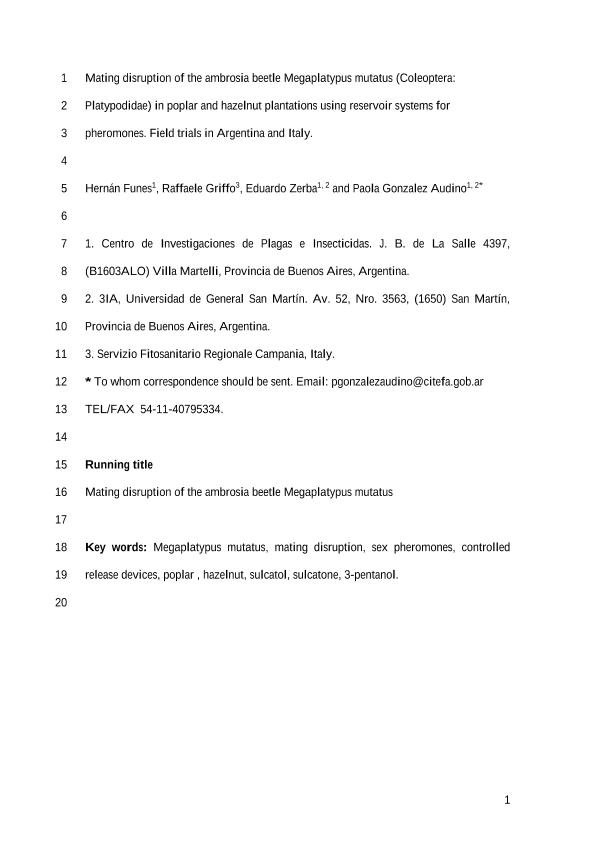Artículo
Mating disruption of the ambrosia beetle Megaplatypus mutatus in poplar and hazelnut plantations using reservoir systems for pheromones
Fecha de publicación:
06/2011
Editorial:
Wiley Blackwell Publishing, Inc
Revista:
Entomologia Experimentalis et Applicata
ISSN:
0013-8703
Idioma:
Inglés
Tipo de recurso:
Artículo publicado
Clasificación temática:
Resumen
Megaplatypus mutatus (Chapuis) (Coleoptera: Curculionidae: Platypodinae) is an ambrosia beetle native to South America, but it has recently been introduced into Italy and represents a serious problem in commercial poplar and fruit tree plantations. Male M. mutatus emit a sex pheromone composed of (+)-6-methyl-5-hepten-2-ol [(+)-sulcatol], 6-methyl-5-hepten-2-one (sulcatone), and 3-pentanol. We performed three field trials of mating disruption of M. mutatus in hazelnut and poplar plantations in Argentina and Italy. To perform these tests, we made plastic pheromone reservoir-type dispensers for sulcatol, sulcatone, and 3-pentanol with zero-order kinetics that were deployed in the field during the female flight period. The number of galleries where mating took place was significantly higher in control than in treated areas, indicating that pheromone application had interfered with female behavior and male localization. Because damage reduction was >56% in both countries, these results demonstrate the potential for the strategy of pheromone-mediated mating disruption of M. mutatus in commercial poplar and hazelnut plantations. Also, our study provides the first evidence for successful pheromone-mediated mating disruption in a forest beetle.
Archivos asociados
Licencia
Identificadores
Colecciones
Articulos(UNIDEF)
Articulos de UNIDAD DE INVESTIGACION Y DESARROLLO ESTRATEGICOS PARA LA DEFENSA
Articulos de UNIDAD DE INVESTIGACION Y DESARROLLO ESTRATEGICOS PARA LA DEFENSA
Citación
Funes, Hernán Martín; Griffo, Raffaele; Zerba, Eduardo Nicolás; Gonzalez Audino, Paola Andrea; Mating disruption of the ambrosia beetle Megaplatypus mutatus in poplar and hazelnut plantations using reservoir systems for pheromones; Wiley Blackwell Publishing, Inc; Entomologia Experimentalis et Applicata; 139; 3; 6-2011; 226-234
Compartir
Altmétricas




